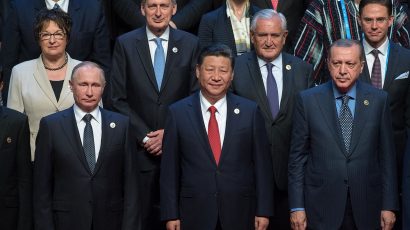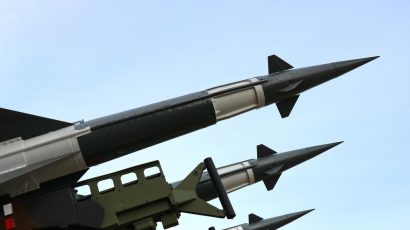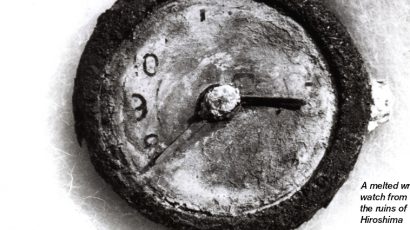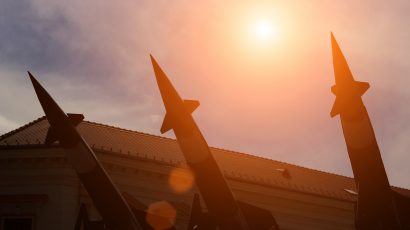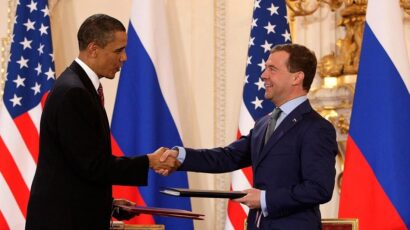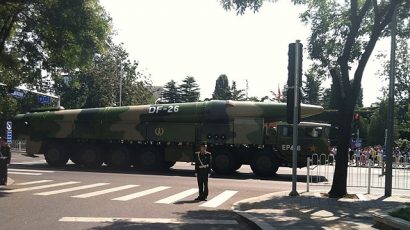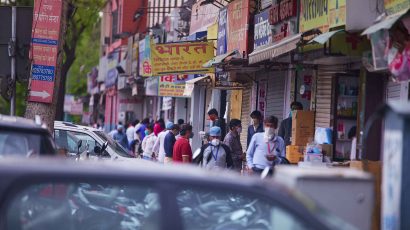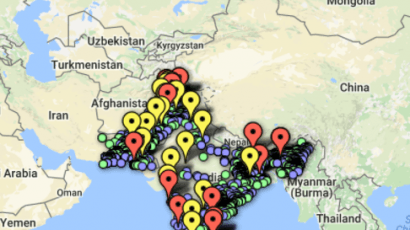Search results for
The human causes of viral outbreaks like Zika
As another mosquito-borne virus spreads rapidly, we should consider how to prevent the next one.
Stopping a new mosquito-borne viral threat
To beat back chikungunya, dengue, and yellow fever, human behavior has to change.
Kazakhstan’s nuclear ambitions
When the Soviet Union collapsed, the international community anxiously watched to see what newly independent Kazakhstan would do with the thousands of nuclear weapons left on its territory. If Kazakhstan had decided to prevent their withdrawal, it would have become the fourth largest nuclear power in the world. Thankfully, the country decided to disarm--a choice it reached due to a combination of international pressure, a desire to integrate into the international community, and assured Western assistance with dismantling its nuclear weapons and facilities.
China worries about Japanese plutonium stocks
Some Chinese policymakers question whether Japanese under-reporting of plutonium stocks was an honest mistake—or a deliberate effort at concealment
The climate risks of China’s Belt and Road Initiative
Evidence of the environmental harm the Chinese government wreaks beyond its borders via the Belt and Road Initiative abounds. Chinese banks are financing more than 70 percent of all coal plants outside of China, with Chinese firms constructing many of them.
South Asia is not the most dangerous place on Earth
While the nuclear situation between India and Pakistan is not good, it's been over-dramatized as near-inevitable here in the West, says a noted physicist from the region.
Examining North Korea’s satellite launch vehicle
North Korea's announcement that it will attempt to launch a satellite into orbit in early April begs the obvious questions of what launcher it will use and what capability that launcher could give if used as a ballistic missile. The easy answer is that no one in the West knows.
But we can examine North Korea's past missile efforts and the path that other countries such as China have taken to develop satellite launchers and ballistic missiles to understand the range of possibilities for the upcoming launch.1
Waning nuclear deterrence in South Asia
Strategic planners in both India and Pakistan need to recognize that moving from a nuclear “war prevention” to “war fighting” strategy is suicidal for both.
Obama, Hiroshima, apologies, and the invisible victims of the atomic bombings
Obama’s visit to Hiroshima will probably not include an apology to the victims of the atomic bombing. But it is an opportunity for the US president to reiterate his commitment to a vision of a world free of nuclear weapons.
The nuclear threat in 2017
It was a year stained by the epithets “little rocket man” and “dotard” and full of all-too-many nuclear threats
Risk reduction can help prevent nuclear crises. Here’s how.
With the erosion of the treaty-based arms control architecture, risk reduction measures can help avoid the worst outcomes.
Northeast Asia’s inflection point for plutonium stockpiling
The current prospects for reprocessing in Japan, South Korea, and China offer an opportunity for a coordinated set of domestic policy decisions that would avoid plutonium stockpiling and improve regional stability.
Can East Asia avoid a nuclear explosive materials arms race?
Japan, China, and South Korea want to reprocess spent nuclear fuel to produce plutonium-based civilian reactor fuels. This could start a nuclear explosive materials arms race in East Asia—something the United States has been all too quiet about.
Nuclear signals in South Asia
India, Pakistan, and China play a nuclear posturing game that is imprecise and dangerous. They’d do better to engage and learn one another’s true security concerns.
Biological threat reduction in Central Asia
During the Cold War, the Soviet Union weaponized plague bacteria for possible use against the United States. Earlier this year, the deadly bacteria finally made its way into the country--albeit under peaceful circumstances. After five years of negotiation between U.S. and Kazakh officials, a U.S. Air Force C-17 cargo plane transported samples of bubonic and pneumonic plague bacteria from laboratories in Kazakhstan to the Centers for Disease Control and Prevention in Fort Collins, Colorado. U.S.
We don’t have a missile gap in Asia. We have a diplomacy gap.
We have been down this Cold War road before. Eventually, we came to our senses and decided to build off-ramps in the form of treaties like INF. Why on Earth would we want to repeat the journey?
Global and regional confrontation in South and Southeast Asia
The US remains the single most powerful country and will remain so for some time. Russia is roughly equal only in respect to its nuclear arsenal. China will soon become the world leader in terms of total economic output—but its per capita income level will not soon approximate Western developed countries. So, where do India and Pakistan fit in?
Old hatreds fuel online misinformation about COVID-19 in South Asia
From old videos repurposed to make it seem Muslims were spreading COVID-19 in India to the assertions of Pakistani clerics that Muslims were immune to coronavirus infection, coronavirus misinformation was easily incorporated into old animosities in South Asia.
The terrifying geography of nuclear and radiological insecurity in South Asia
The authors mapped the target threat environment in South Asia’s two states with advancing nuclear weapons programs, India and Pakistan. They found that the requisite means, motive, and opportunities for an incident of terror via weapons of mass destruction or disruption converge in South Asia.


